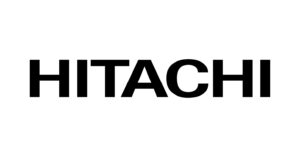Educators Face Rising Costs, Spend Own Money on Classroom Supplies
Educators Highlight Lack of Support and Rising Costs as They Use Personal Funds for Classroom Needs
WASHINGTON—A recent survey conducted by the American Federation of Teachers (AFT) reveals significant financial burdens on educators, as many expect to personally purchase food and supplies for their students amidst dwindling federal nutrition funding.
The comprehensive survey involved over 700 K-12 AFT members and highlighted that nearly half (49.5 percent) anticipate buying food for students this academic year due to the expiration of COVID-era nutrition programs. This concern persists even before potential impacts from future reductions in the Supplemental Nutrition Assistance Program take effect in 2028. Additionally, 16 percent remain uncertain about such purchases, while around one-third do not anticipate this need.
Commenting on the situation, a Florida educator noted, “Students need food due to [a] lack of it at home,” emphasizing the necessity to provide essential items like tissues, hand sanitizer, and writing tools because “students are not able to purchase their own.” Similarly, a Kentucky teacher remarked on the hunger issue, “A lot of my students are starving because of lack of food availability.”
The survey uncovered that a majority of educators spend over $300 from their own pockets each year on classroom essentials such as pencils, paper, and notebooks. Additionally, they often purchase books, decorations, snacks, rewards, and cleaning supplies. One teacher from California invested $650 in an air conditioner to combat classroom heat, stating, “because it gets so hot that the kids just shut down and the district won’t provide it.”
Educators cite insufficient district support and escalating costs as primary reasons for their personal spending. “Every year, public school educators dig into their own pockets to help their students get the education they deserve,” said AFT President Randi Weingarten. “They pay for books, decorations, paper, pencils and, yes, even food, because they care deeply about their students and giving them a shot at success. But as public schools get defunded and basic necessities in this country become unaffordable for working people, teachers and parents are feeling squeezed. Our member survey shows public school educators need more resources to help make their classrooms the safe and welcoming places that students need to learn. What other professionals are asked to fund their work like teachers?”
Conducted by Grow Progress, the survey was completed by 705 AFT members between Aug. 29 and Sept. 2, coinciding with the new school year start. Predominantly, respondents were aged 35 to 54 (61 percent), with women making up 76 percent and 75 percent holding advanced degrees. One-third of participants reported being parents or guardians of children under 18.
Consistent with previous years, over half of the surveyed educators plan to spend more than $300 on classroom needs, with about a quarter expecting to exceed $600. A significant portion attribute this to inadequate funding and supply provision from districts, while 16 percent highlight rising costs as a factor. “Everything costs more!” shared a Georgia teacher, adding that the once-affordable Dollar Tree store has increased prices, impacting teachers’ budgets.
Another 10 percent pointed to increased student needs, with many lacking their own supplies. “The children at my school don’t have the funds to buy school supplies or snacks,” stated a Florida educator, “So I am constantly buying supplies for them throughout the year.”
Concerns were also voiced regarding the potential long-term impacts of Trump’s tax law, which shifts public school funds to private institutions, fails to enhance the educator expense deduction, and proposes historic cuts to food aid, potentially leaving millions of students hungry.
Survey respondents hailed from diverse states, with the largest groups from New York (22 percent), Florida (15 percent), Minnesota (11 percent), Illinois (8 percent), and California (8 percent). The survey also revealed a predominant negative view of the Trump administration’s policies, with 55 percent describing a “very negative” impact on schools and communities, and 16 percent noting a “somewhat negative” effect. The negative impacts were chiefly attributed to immigration policy-induced fear and funding inadequacies, while a mere 8 percent recognized any positive influence.
A Los Angeles teacher commented on immigration-related anxieties, saying, “I teach in Downtown Los Angeles, and my school site is at the center of the ICE raids,” adding that many students are recent immigrants who fear attending school. In Florida, one educator pointed to the “lack of support materials for ESOL [English as a second language] students” and the overall lack of empathy toward students requiring assistance.
The survey sample was unweighted, reaching 100,000 K-12 AFT educators, and reported a margin of error of 3.69 percent at a 95 percent confidence level and 3.10 percent at a 90 percent confidence level.
# # # #
The AFT represents 1.8 million pre-K through 12th-grade teachers; paraprofessionals and other school-related personnel; higher education faculty and professional staff; federal, state and local government employees; nurses and healthcare workers; and early childhood educators.
---
Read More USA Works News


